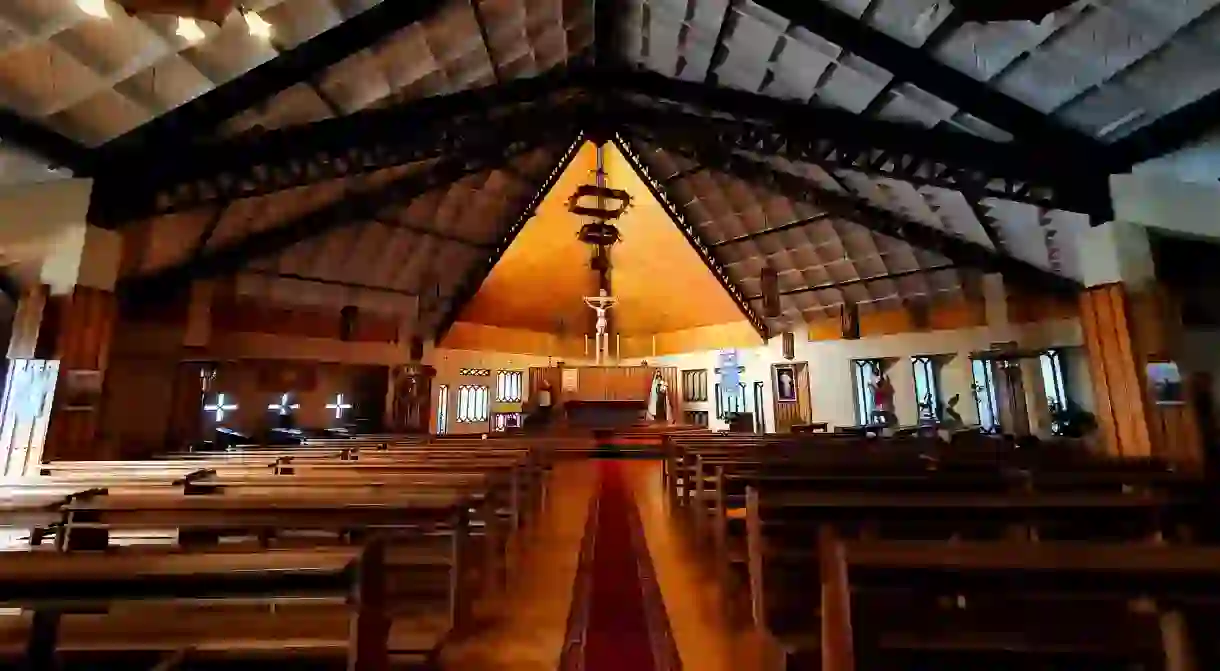The Most Beautiful Churches of Chiloé, Chile

Scenic and quaint, Chiloé boasts misty rolling hills, warm friendly people and a fascinating seafaring history. But it’s the island’s magnificent churches that really pull in the crowds, each with their own unique color scheme to provide a reference point for fishermen at sea. Around 70 of these marvels were constructed almost entirely from native wood in the Chilota architectural style, an attractive mix of European Jesuit form and traditional indigenous design which has earned UNESCO recognition. Did you know – Culture Trip now does bookable, small-group trips? Pick from authentic, immersive Epic Trips, compact and action-packed Mini Trips and sparkling, expansive Sailing Trips.
Church of San Francisco
The third oldest church in Chile, San Francisco was originally built in 1567 to evangelize the indigenous inhabitants of the region. Situated on the main plaza in Castro, Chiloé’s capital, the exterior was built in a neo-Gothic style and features a bright yellow galvanizad iron facade and two identical towers. Inside, ceiling buttresses stretch up to 100 feet (32 meters) and an image of the Archangel Michael battling against Satan adorns the back altar.
Church of Santa María de Loreta
Located on Achao, the biggest town on the Quinchao Island, the central wooden spire of the Church of Santa María de Loreta is a fine example of Chilota architecture. Built back in 1740 when the entire Chiloé archipelago was still under Spanish rule, this is the oldest surviving traditional church of the Jesuit era.
Church of Quinchao

The Church of Quinchao is the only other remaining traditional church of the Jesuit era, which is why its exterior is almost identical to that of Loreta. Built in 1880 just one block uphill from the sea, strong wind and rain has necessitated many restorations over the years, the most significant of which took place in 2006 and saw 80% of its timber completely replaced.
Church of Rilán
Located in the Rilan community near Castro, the church dates back to the early 19th century. Its prominent feature is a white, multi-tiered central tower in the typical Chilota style.
Church of Chonchi
One of the more colorful churches on the island, Chonchi features aqua-blue pillars and arches that heavily contrast against its beige steeple. This vibrant catholic church is also known as Church of St Charles Borromeo, the patron saint to whom it pays homage.
Church of Tenaún
Located in the town of Tenaún in the Dalcahue community, the word Tenaún means ‘three peaks’ in the region’s indigenous tongue. It’s not hard to guess how this blue and white beauty got its name.
Church of Caguach
Located on the island of the same name, the Church of Caguach had to be rebuilt from scratch after it was gutted by fire in 1919. This distinct red church features a single, block-shaped tower and is notable for its shingled facade. Built to honor the almighty Jesus of Nazareth, a huge festival takes place on August 30 which recreates his brutal last moments, complete with whipping, a thorny crown and a mock crucifixion.
Church of Our Lady of Sorrows
Right on the main plaza of the small town of Dalcahue lies the Church of Our Lady of Sorrows. Built at the end of the 19th century, the church is similar to others of the region if not for its bright white paint job.
Church of San Juan Bautista
Not far from Dalcahue is the Church of San Juan Bautista which was also constructed in the late 19th century. Its unpainted shingles give the building an interesting rustic effect.
Church of Vilupulli
Also known as the Church San Antonio de Padua de Vilupulli, this isolated unpainted construction sits all by itself in a paddock overlooking the sea.













